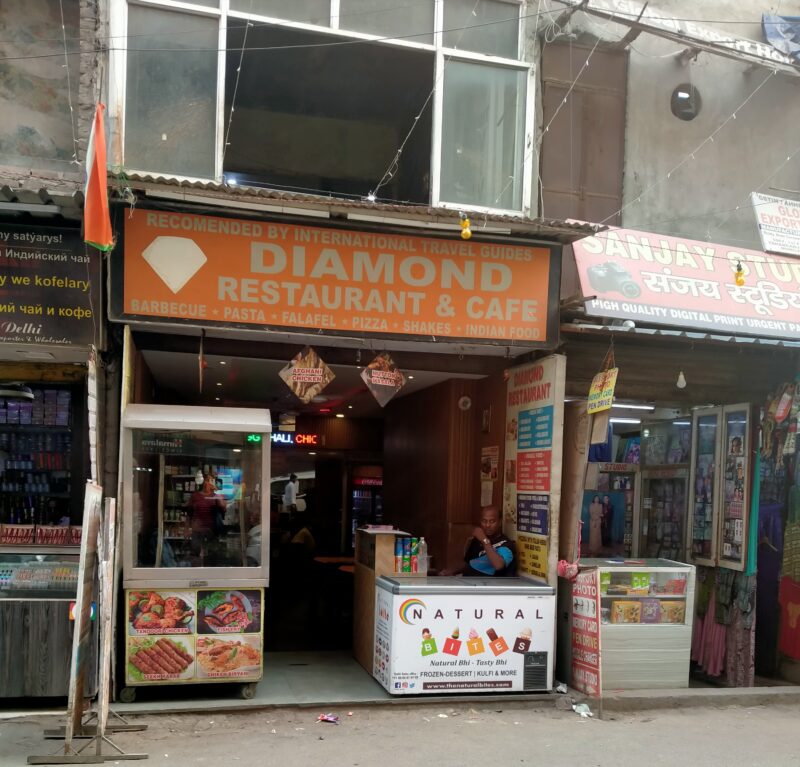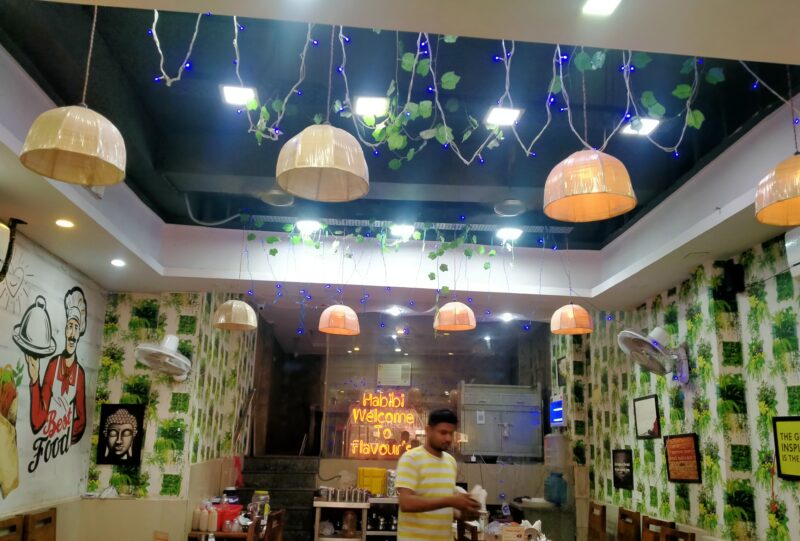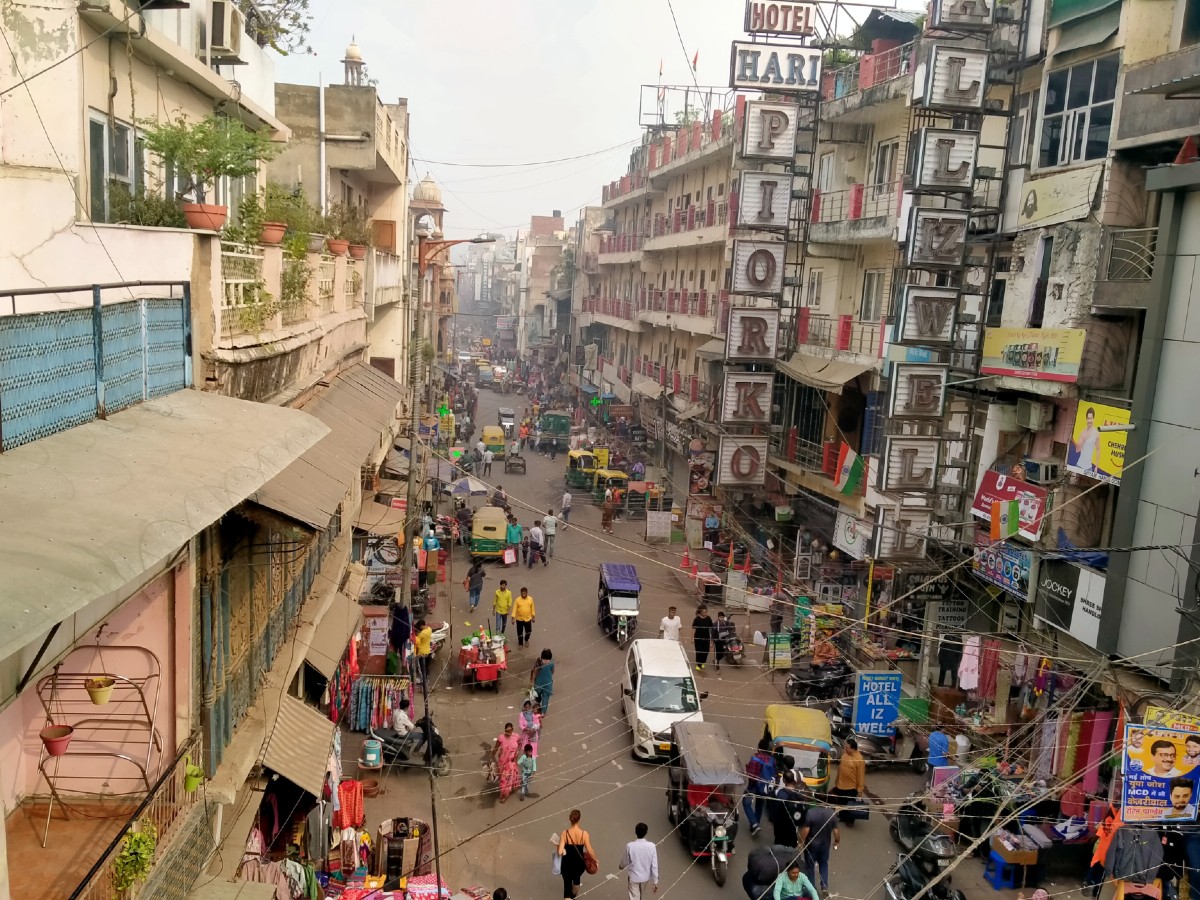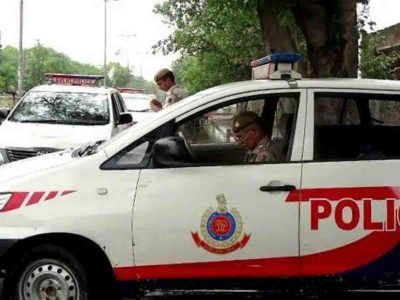Amit Pal squeezes circular loops of jalebi batter in a woke full of desi ghee before letting out his exasperation.
“This is not the Paharganj [market] it used to be a decade ago. Pehle to yahaan bahot raunak hua karti thi, itni bheed ki maano jo jahaan khada hai wahin khada reh jaata tha (earlier this was a bustling place and there was no space to move freely. Now, it is empty). This is not the mood of Paharganj,” he says as he mans the iconic 80-year-old shop “Lala Ram Chander Jalebi Wala” which has stood the test of time.
“People come from various parts of the city to eat jalebi and imarti [here]. It is our fourth generation now in this shop. This shop is witness to changing eras in the capital,” says the 53-year-old.
The tiny shop has a counter at the forefront. It serves not just as the billing counter but also as inquiry desk for the visitors.
Also read: Meet the Waghris: The first authority on Delhi’s second-hand clothes
The footfall has decreased in a market that for long attracted foreign and local tourist for its budget hotels and cafes offering reasonably priced food. Set in the vicinity of a 19th century bridge, that takes Delhiwaalas from Ajmeri Gate to the west side of the city, Paharganj is home to over a thousand hotels and lodges.
Outside the bazaar, roads are busy with buses, animals and people all fighting for space. But once inside, the buzz is missing.


“During the pandemic, there was absolute darkness and even now when almost every business is coming back on track, Paharganj remains empty,” explains Pal.
The president of the market association Subhash Vij concurs with Pal.
“Pahargranj is actually desolate. At the moment there is just 10% work in the market. Paharganj’s main market, little cafes and shops are all dependent on foreigners. There was obviously the pandemic which crushed us,” says Subhash Vij, president of the Main Baazar Vyaapar Mandal in Paharganj.
“But it is not just the pandemic or demonetisation, there’s the Ukrainian war and now the declining value of the currency. People are not willing to come or buy things.”
A rough estimate suggests that around 50-60 cafes have shut down completely.
Unlike Pal’s jalebi shop, Krishna Cafe is fairly new, just sixteen years old.
The terrace or rooftop area of the café offers a panoramic view of the main bazaar on chhe-tooti (6-tooti) chowk, including of the dangerously dangling power cables. You’ll be instantly taken in by the catchy bazaar signages: hotel All ‘iz’ well, hotel Hari… A mishmash of old structures peeping through history.
It is 11.30 am and foreigners sitting there are taking pictures of the view the cafe offers.
Mohan, the 33-year-old manager is taking orders from them.
Krishna Café serves Indian, Continental, Chinese, Italian and Mexican cuisines.
“There are just a handful of cafes left in Paharganj. Some foreigners have started coming in although they too are now reluctant to step out due to pollution over the past few days. Just yesterday, one Polish man complained about the bad air. He doesn’t want to step out of his hotel since his eyes start to burn the moment he does. He said he feels like he is choking as if he has been put inside a gas chamber,” complains Mohan.
Mohan had to endure tough times during the pandemic as he bore the establishment costs despite no business, only in the hope that business would return to normal.
“Nobody from the government helped us. I paid electricity bills even during the lockdown. I thought things will improve after the pandemic but I am still waiting for more customers. Our major source of income has always been from the tourists, especially foreigners. I am still waiting for more visitors. I hope things will get better soon.”
Most of the cafes are on rent. Add to that, the rising cost of raw materials like vegetables, gasoline and cooking gas as well as labour is making business less profitable for the owners.
While most of the cafes have not increased the price of food on the menu due to decline in purchasing power of the tourists, the rising cost of raw materials has eaten into their profits.
Exotic Cafe is another one tucked away in the alleyways of Paharganj where Lakshman Chethri from Assam has been working as manager for almost five years now.
The lady owner is sleeping in a corner of the café on a bench as she is feeling unwell.
“Madam is from Nepal and took over the cafe just a few years ago. We are running this cafe on rent, like most cafes here,” says Chethri.
“It is extremely difficult to manage because the landlord is not kind. I would say demonetisation was the beginning of the slide. People don’t want to spend money the way they used to, say 10 years ago. Tourists from different states come to eat at our cafe and their eyes search for reasonable prices on the menu card. The foreigners have stopped giving tips to us.”
Meanwhile, a foreigner steps into the cafe which, like Krishna Café, is also on the rooftop facing other buildings. The lady tourist sits on a corner table and Chethri leaves to attend the customer.
Soon the owner of the cafe joins in the conversation and sums up the situation.
“We are continuing to serve the same menu. The sky rocketing costs of vegetables, labour, rent, gasoline and cooking gas is making it harder,” says the 45-year-old from Nepal.
If you ask someone about the other old cafes of Paharganj, then it is impossible to miss Everest Café. It is located in a deep alleyway. The first floor is occupied by Kanishka Aquarium and Pet Store and as the trend goes, the cafe is situated on the second floor which is the rooftop of the building.

Jai Kishan is sitting on the table and his employee is taking an order from a customer. There are just a couple of customers in the cafe. Kishan has been living here for thirty years and was managing three cafes in the area until 2019.
“I was handling three cafes earlier but now I don’t even know for how long I will be able to run this one cafe. There are many challenges now — increasing rent, competition in the market, inflation and more,” says Kishan.
“It started during the year of demonetisation. The person I was working in partnership with, suddenly decided to move to another city. He then started relocating the staff. Gradually, all the cafes got merged into this one little cafe,” explained Kishan.
Outside the Diamond Café, which is surprisingly on the ground floor, sits an artist who claims to have travelled to more than 20 nations for puppet shows. Several publications and youtubers have interviewed him. But now there’s no work.
While the cafes have been struggling, the hotels had to slash their room rents to attract tourists. The ones in the market have had to slash the room tariff between 30% and 50% — from Rs 1500-1200 per day to Rs 800. Hotels which have been able to survive are expecting profit in the peak season (schools’ summer vacation).
After visiting more than 20 hotels, it came to notice that things are gradually coming back on track. Hotels like Oasis Deluxe, White House Lodge, Hotel Paradise and Maharaja Continental have satisfactory though not high occupancy. The primary reason why these cheap hotels have been able to bounce back is through community building. The owners who hail from states like Assam, Bengal and Tamil Nadu use their networks and whenever people from the respective states come to Delhi for work, family trip or medical reasons, they stay in these hotels.
Yet, foreign tourists continue to elude.
But Vij is hopeful.
“Yes, we are gradually bouncing back but the pace is extremely slow. The hotels that were able to survive have started welcoming guests but they are mostly Indians. Moreover, the tariff has been cut as people are reluctant to spend. Having said that, we are still hopeful and waiting with bated breath to welcome tourists,” said Vij further.
Follow us on:
Instagram: instagram.com/thepatriot_in/
Twitter: twitter.com/Patriot_Delhi
Facebook: facebook.com/Thepatriotnewsindia





